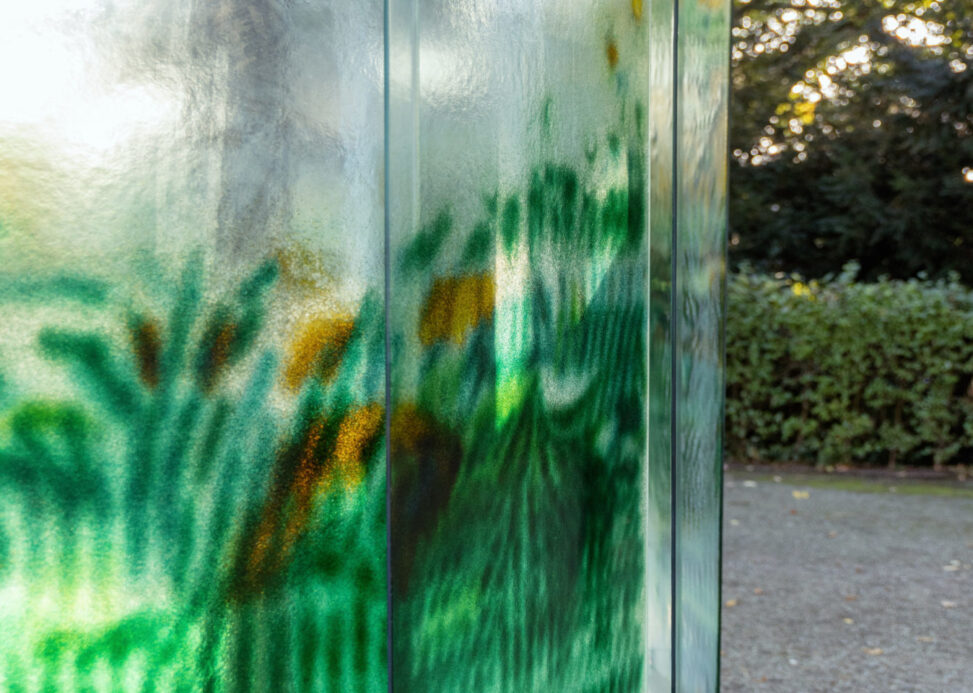How can robotic fabrication enable a novel customized materiality of glass and create new architectural experiences?
Robotic fabrication allows for the customization of float glass. The attached multi-channel tool contains granular glass of different colors and enables the printing of polychromatic patterns. The granular glass surface is fused with the float glass at high temperatures in the kiln into one polychromatic glass element. Granular materiality is enhanced through a strategic play with robotic process parameters and robotic brush strokes.
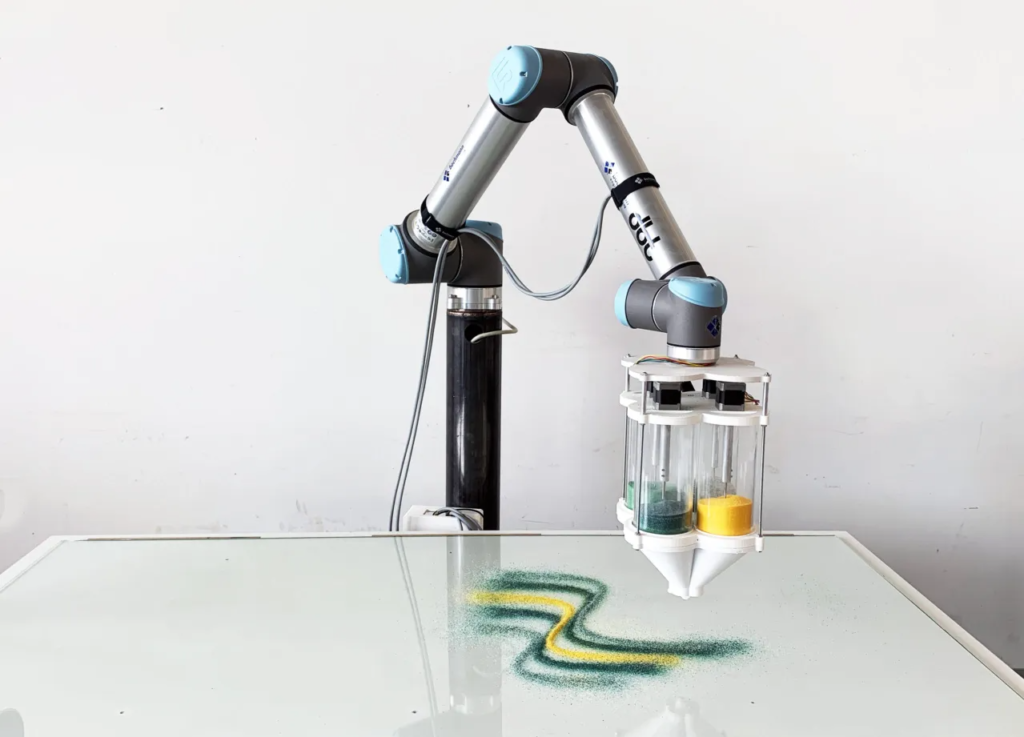
Customized computational tools are developed to design patterns of color and material deposition. Strategies of computational design enable design from granular detail, to the overall pattern design. To design color and transparency properties of each panel, a point cloud model of the site is employed, to create the filtering effects in relation to site characteristics.

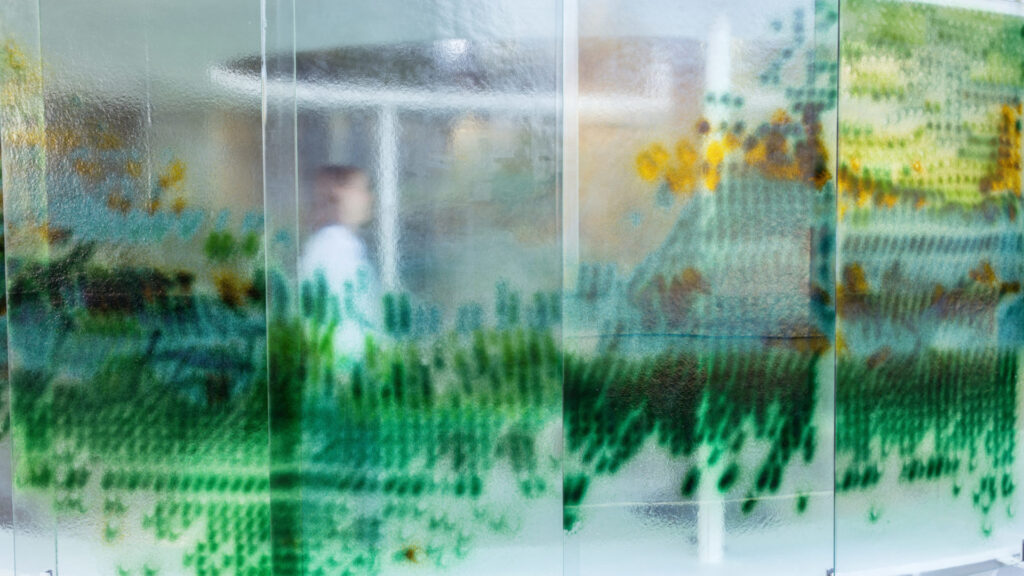
Designed specifically for the site of the Swiss Re Centre for Global Dialogue in Zurich, the forty-square meter pavilion is an immersive, panoramic light color space assembled of eighteen individual panels along an oval floor plan. Each panel showcases how standardized architectural materials can be robotically enhanced with novel material properties of varying color, opacity, and texture. The immersive installation demonstrates the potential of glass architecture beyond mere transparency and reinterprets its surrounding landscape.
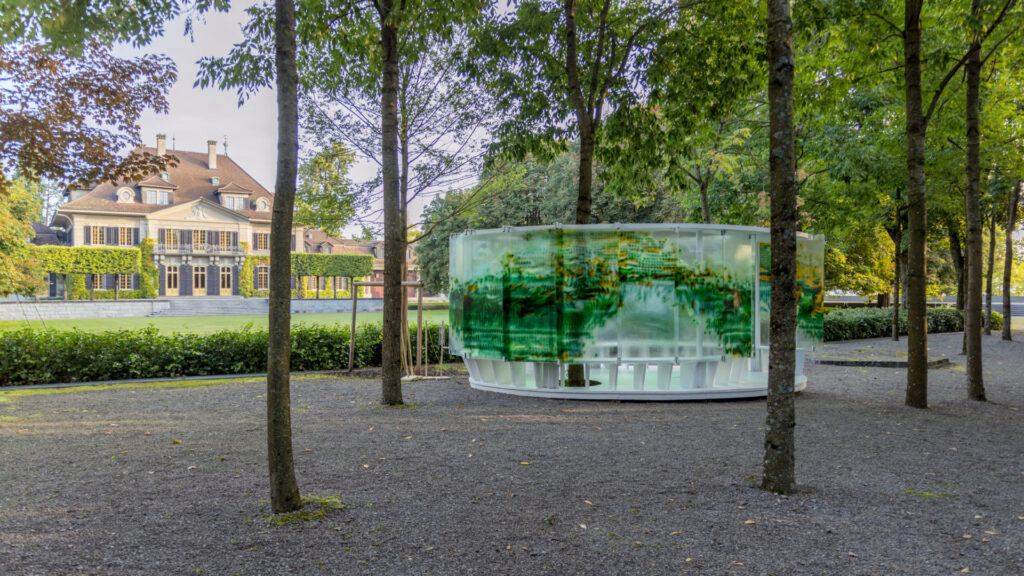
The Beyond Transparency pavilion is designed by students of the Master of Advanced Studies in Architecture and Digital Fabrication 2020-2021 at the ETH Zurich and is based on previous research by the chair of Digital Building Technologies.
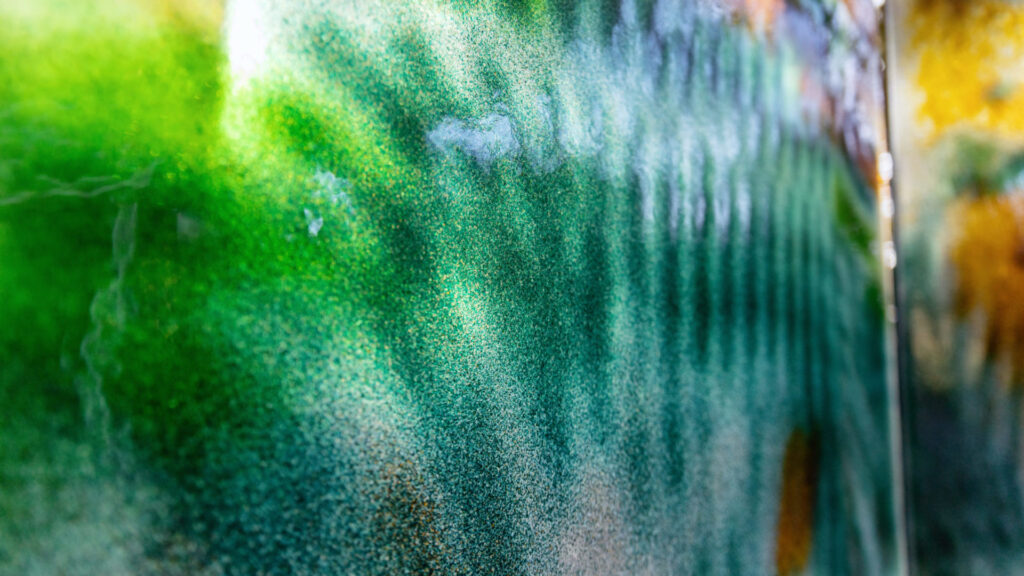
More information about the project can be found on the DBT website, Beyond Transparency.
Acknowledgments
MAS DFAB in Architecture and Digital Fabrication | ETH Zurich
Teaching Team Digital Building Technologies
Rena Giesecke (Project lead), Ioanna Mitroupoulou, Rémy Clemente, Eleni Skevaki, Yael Ifrah (MAS ETH DFAB coordination)
Students
Designed by students of the Master in Advanced Studies in Architecture and Digital Fabrication 2020-2021: Evgenia Angelaki, Liya Sunny Anthraper, Pascal Bach, Yen Fen Chan, Wei-Ting Chen, Ilaria Giacomini, Simon Griffioen, Guillaume Jami, Lena Kitani, Artemis Maneka, Beril Önalan, Priyank Soni, Foteini Salveridou, Ko Tsuruta, Chengyuan Wei, Carlos Wilkening
Structural Design Support, ETH Zurich
Dr. Ole Ohlbrock, Federico Bertagna, Dr. Vlad Alexandru-Silvestru
Technical Support, ETH Zurich
Tobias Hartmann, Alessandro Tellini, Christian Egli, Fabio Meier, Christian Thiago Peterhans, Benedikt Kowalewski
Glass Fabrication Consulting
Matteo Gonet Glass Basel
Sponsoring and Support
Saint-Gobain, AF Fercher AG, Swiss Re Institute
Exhibition
The pavilion was exhibited at the Swiss Re Centre for Global Dialogue Rüschlikon from September to the end of October 2021.
